MASLD vs MetALD With Chantil Jeffreys
Chat with MASLD AI

Hi, I am MASLD AI.
Suggested Questions :

MASLD AI 10:16 PM

Chantil Jeffreys, NP at Gastro One, offers a clear, case-based overview of metabolic dysfunction–associated steatotic liver disease (MASLD), MASH, and mixed-etiology MET-ALD. Using a common clinic scenario, she explains how to recognize steatotic liver disease, why accurate alcohol history matters, and how non-invasive tools (e.g., FibroScan for stiffness and CAP, alcohol biomarkers like PEth/EtG) can clarify what’s driving liver injury. You’ll get practical guidance on lifestyle therapy—Mediterranean-style nutrition, sustainable weight loss, and regular aerobic plus resistance exercise—along with when to consider medications, specialist referral, and HCC surveillance. Ideal for APPs and GI clinicians seeking a simple, patient-centered approach to preventing progression from fatty liver to advanced fibrosis and cirrhosis.
Related Podcast
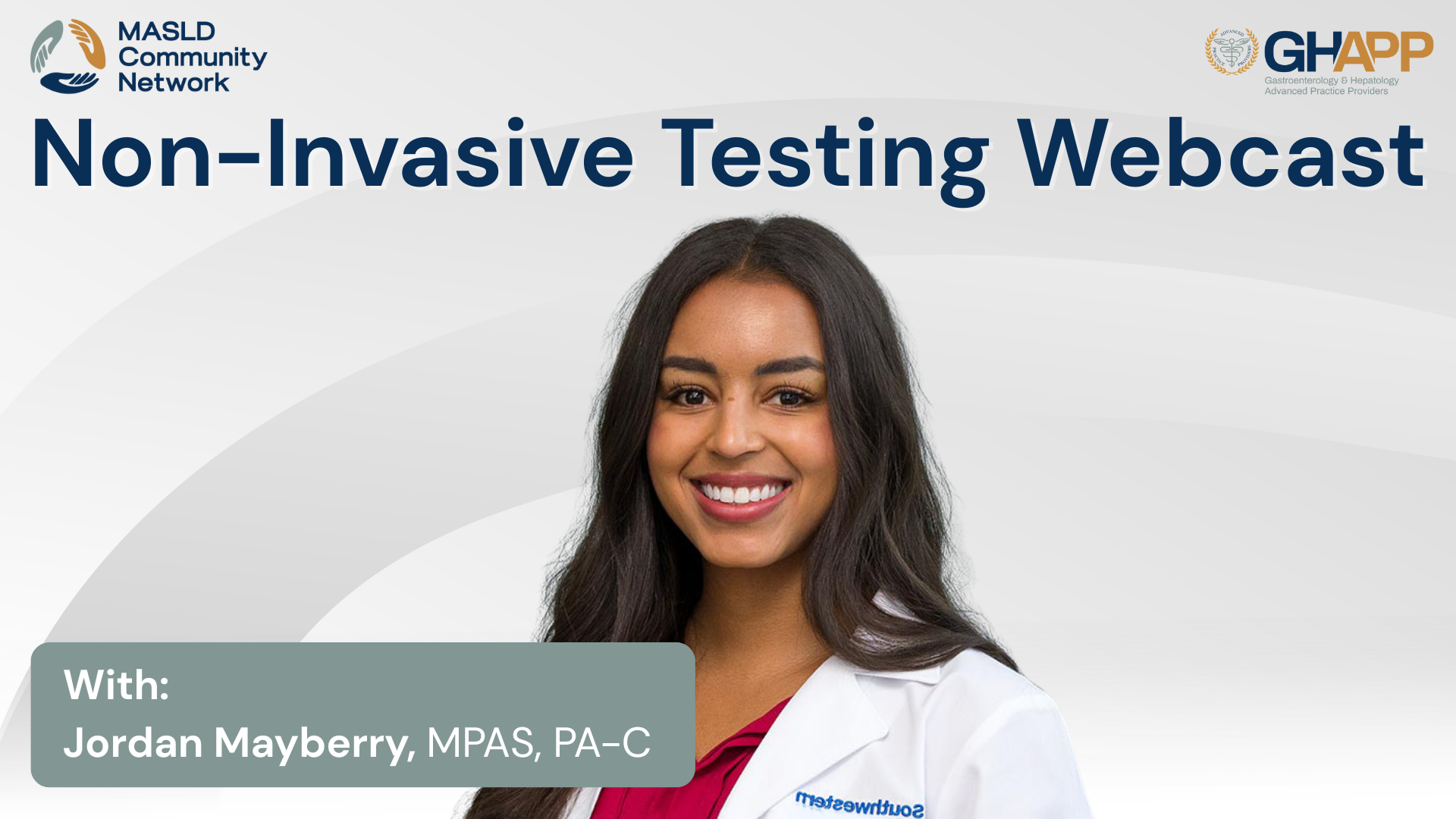
Non-Invasive Testing With Jordan Mayberry

In this educational session, Jordan Mayberry, PA-C from UT Southwestern, presents a practical overview of non-invasive testing for diagnosing and staging metabolic dysfunction-associated steatotic liver disease (MASLD) and metabolic-associated steatohepatitis (MASH). Using a real-world patient case, Jordan discusses how clinicians can leverage key tools—such as FIB-4, ELF testing, FibroScan (VCTE), and MRI elastography—to assess fibrosis and stratify risk in patients with MASLD. She explains the benefits, limitations, and clinical applications of each modality, including guidance on when and how to use them in everyday practice. Whether you're a hepatology specialist or a provider managing patients with cardiometabolic risk factors, this talk delivers a clear, step-by-step approach to incorporating non-invasive liver assessment into your workflow. Viewers are also invited to explore the GHAPP MASLD/MASH Community Network for ongoing education, resources, and clinical insights.
Watch Now
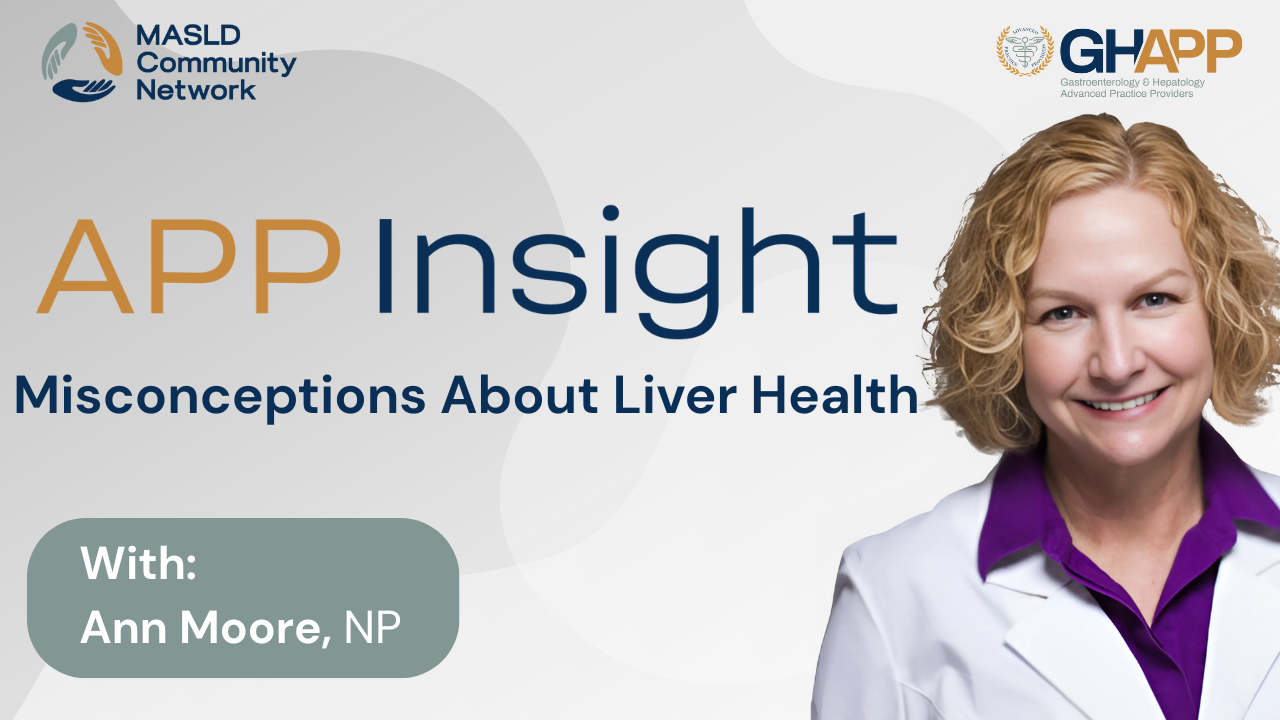
Misconceptions About Liver Health With Ann Moore

Join Ann Moore, NP from Arizona Liver Health as she tackles two of the biggest misconceptions in liver health. With over 40 years of experience, Ann explains why normal liver tests don’t always mean a healthy liver—patients with MASH and advanced fibrosis (F2–F3) can have “quiet labs” while disease silently progresses. She also dispels the outdated belief that only alcohol causes liver disease. With the new MASLD and MASH terminology, the focus is on metabolic dysfunction—including obesity, diabetes, and high cholesterol—as the main global drivers of fatty liver disease, not alcohol alone. This educational session is designed to help clinicians and patients alike understand why early detection and management of metabolic risk factors are essential for protecting long-term liver health. Stay connected with the MASLD & MASH Community Network for more expert insights and updates on fatty liver disease care.
Watch Now
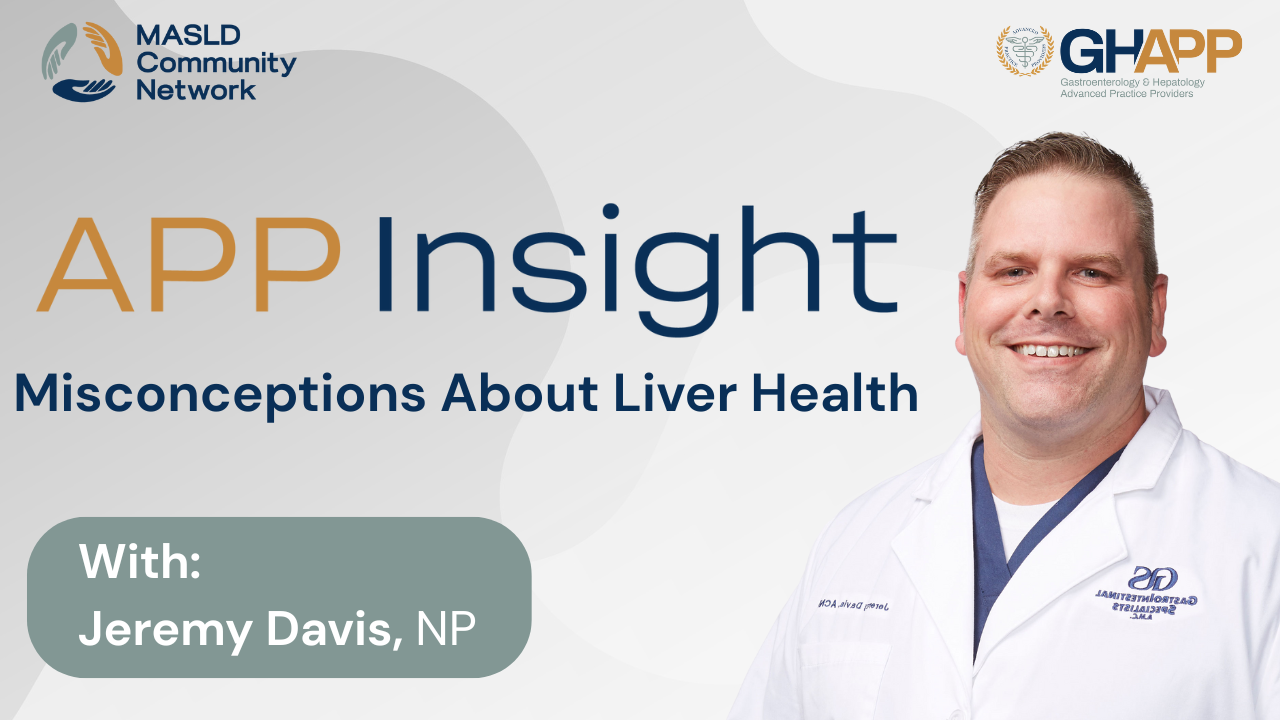
Misconceptions About Liver Health

In this quick but powerful video, Jeremy Davis, NP from Shreveport, Louisiana, addresses some of the most common misconceptions about liver health that he encounters in clinical practice. Many patients believe that liver disease only occurs in people who drink alcohol, but Jeremy explains how conditions like MASLD (Metabolic dysfunction-associated steatotic liver disease) and MASH (Metabolic-associated steatohepatitis) can affect individuals regardless of alcohol use. He also clears up the myth that only overweight patients are at risk, pointing out that co-morbidities such as hypertension, high cholesterol, cardiovascular disease, and type 2 diabetes can contribute to liver disease—even in patients with a normal BMI. Finally, Jeremy explains why normal liver enzyme labs (ALT and AST) don’t always rule out liver disease, making it crucial to assess underlying risk factors and improve provider and patient awareness. This video is a valuable resource for both healthcare professionals and patients looking to better understand non-alcoholic liver disease and why early screening matters.
Watch Now
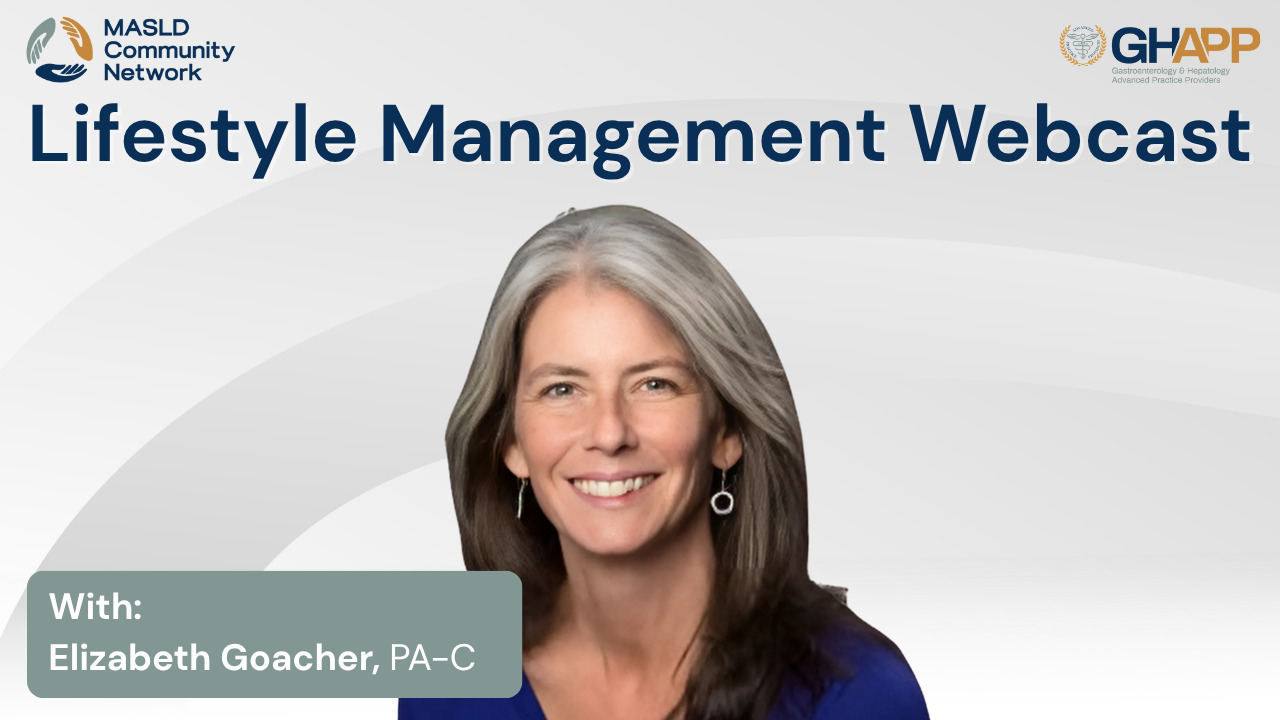
Lifestyle Management With Elizabeth Goacher

Elizabeth Goacher, PA-C, Duke University, leads a practical, peer-to-peer session on lifestyle management for MASLD/MASH, translating evidence into clear, clinic-ready advice for APPs and primary care. She covers how to identify at-risk patients, use a simple FIB-4→VCTE/ELF pathway to rule out advanced fibrosis, and then center treatment on sustainable weight loss (goal 7–10%), calorie restriction, and a Mediterranean-style diet (more plants, whole grains, lean seafood, fewer added sugars and saturated fats). Elizabeth explains why fructose and highly processed foods drive hepatic fat and inflammation, how to tailor nutrition to culture and access, and how to turn “exercise” into an achievable plan—progressing from walking to 150–200 minutes/week of moderate aerobic activity or 75–125 minutes of vigorous exercise, plus resistance training for central adiposity and insulin resistance. She shares motivational interviewing tips (small, specific goals; non-stigmatizing language; frequent follow-up) and reminds clinicians that lifestyle therapy improves not just liver outcomes, but also diabetes, hypertension, and cardiovascular risk—making it the foundation of MASLD/MASH care.
Watch Now

Podcast: Discordant NITs, the Gray Zone

In this episode, Gabriella McCarty, NP at Northshore Gastroenterology in Cleveland, Ohio, shares her deep clinical insights on the evolving landscape of MASLD (Metabolic Dysfunction–Associated Steatotic Liver Disease) and MASH (Metabolic Dysfunction–Associated Steatohepatitis). With over 26 years of experience in private practice, Gabriella explains that the majority of fatty liver cases she encounters are found incidentally—often during evaluations for unrelated GI issues like GERD or routine colon screenings. She discusses the updated nomenclature from NAFLD to MASLD and outlines the cardiometabolic risk factors that inform diagnosis, such as obesity, diabetes, hypertension, and dyslipidemia. Gabriella emphasizes the importance of non-invasive assessments like FibroScan, FIB-4, ELF testing, and, in select cases, liver biopsy or MR elastography for accurate fibrosis staging. She also highlights the challenges of discordant test results and shares practical strategies for follow-up and monitoring. With a strong focus on lifestyle modification—promoting a Mediterranean diet, targeted weight loss, regular exercise, and alcohol avoidance—this episode provides essential education for providers managing patients with fatty liver disease, even when it's not the primary reason for the visit.
Watch Now
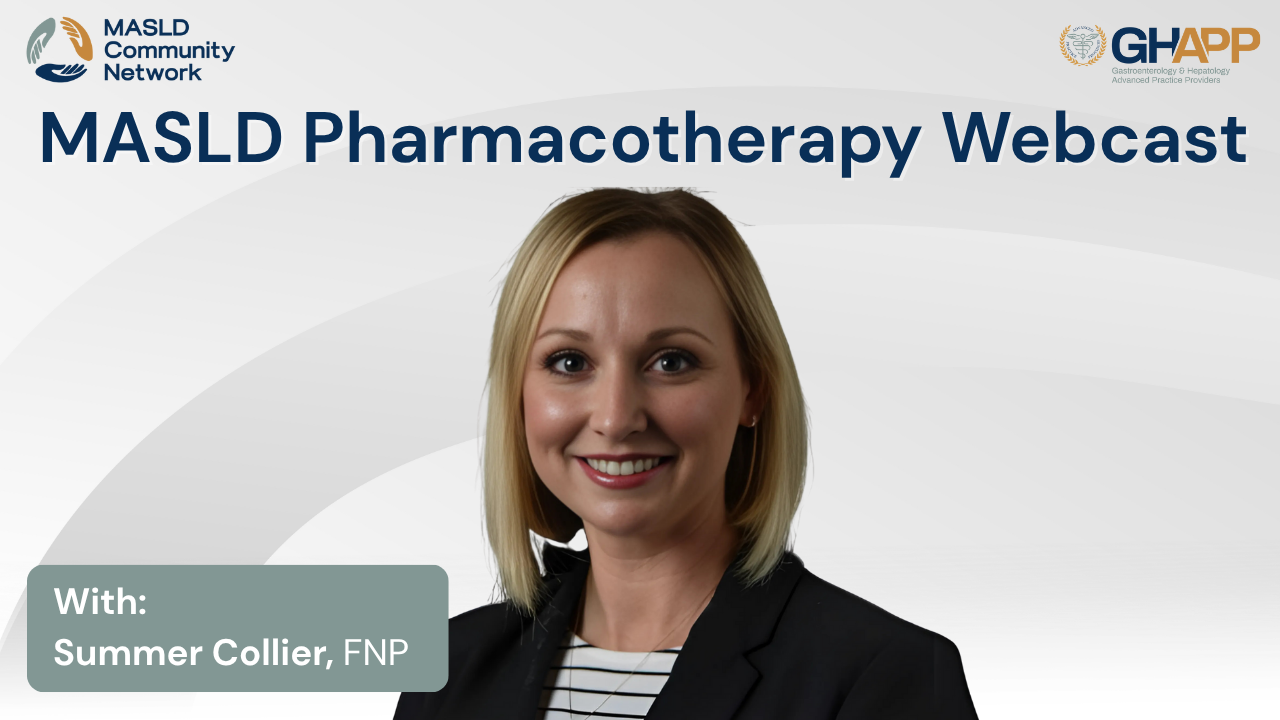
MASLD Pharmacotherapy With Summer Collier

Join Summer Collier, NP for a clear, clinic-ready overview of MASLD pharmacotherapy. This session explains why management starts with the metabolic syndrome—targeting obesity, type 2 diabetes, hypertension, and dyslipidemia—while reinforcing that lifestyle change (diet, physical activity, and 7–10% weight loss) remains the cornerstone. Summer reviews the role of GLP-1 receptor agonists (e.g., semaglutide, tirzepatide) for weight reduction and glycemic control—including the anesthesia precaution to hold GLP-1 therapy 7 days before endoscopic procedures—and outlines liver-directed options: vitamin E (select non-diabetic patients, risks/limits), pioglitazone (cardiometabolic benefits vs. weight gain/edema considerations), and the first FDA-approved therapy for non-cirrhotic MASH with F2–F3 fibrosis, resmetirom (THR-β agonist targeting hepatic fat and inflammation). You’ll also hear practical tips on patient selection, staging and restaging with noninvasive tests (FIB-4, FibroScan®/elastography, MRI-PDFF, ELF), coordinating weight-management referrals, and planning follow-up. Ideal for GI/hepatology clinicians and APPs seeking an up-to-date, evidence-based roadmap to treat fatty liver disease and prevent progression to advanced fibrosis.
Watch Now
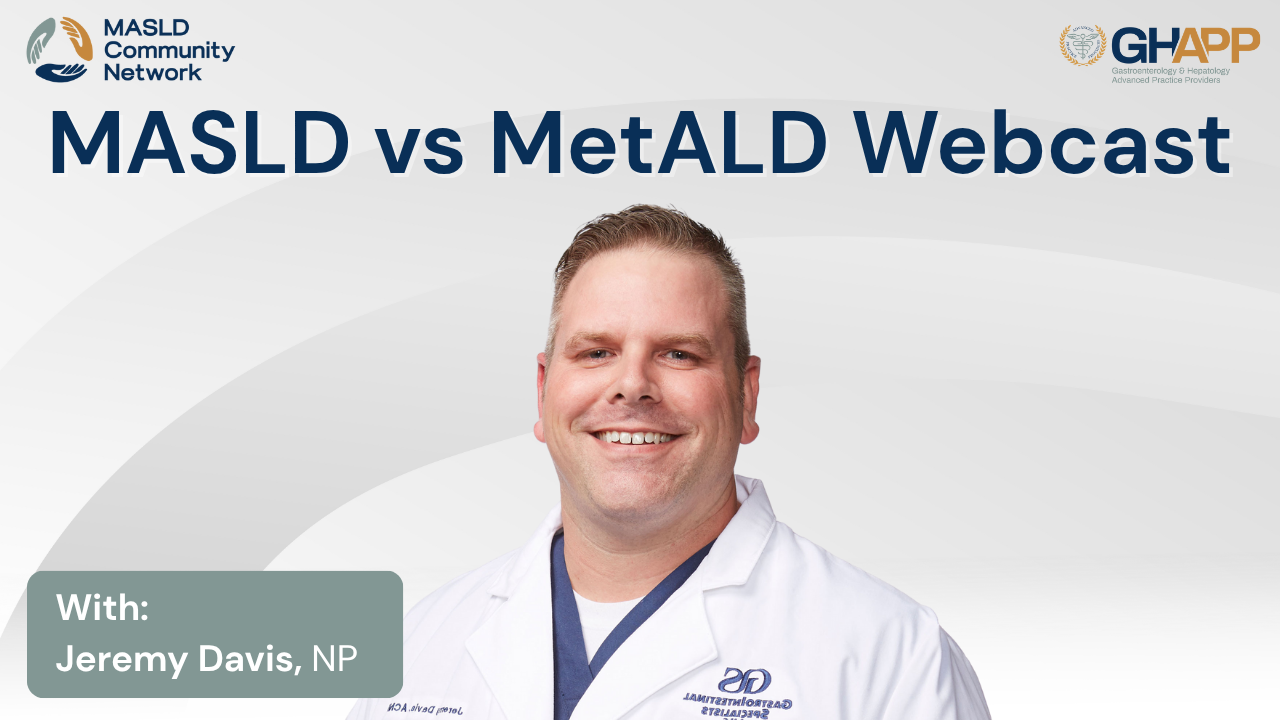
MASLD vs MetALD With Jeremy Davis

In this MASLD Community Network talk, Jeremy Davis, NP, uses a real-world case to clarify how to differentiate MASLD from MetALD, interpret alcohol exposure, and stage disease with non-invasive tools. He explains standard drink equivalents (≈14 g ethanol) and why accurate histories plus objective biomarkers matter, then walks through labs and elastography (FibroScan kPa/CAP) showing F3 fibrosis with severe steatosis. You’ll learn a practical workflow to rule out alternative etiologies, quantify alcohol use, and understand how metabolic risk plus alcohol accelerates fibrosis and decompensation risk. Jeremy outlines counseling pearls (abstinence recommendations, Mediterranean-style diet, weight loss, activity), eligibility considerations for resmetirom in non-cirrhotic MASH (F2–F3), and when to start HCC surveillance. Watch to strengthen your staging, counseling, and treatment decisions for patients who fall along the MASLD–MetALD spectrum.
Watch Now
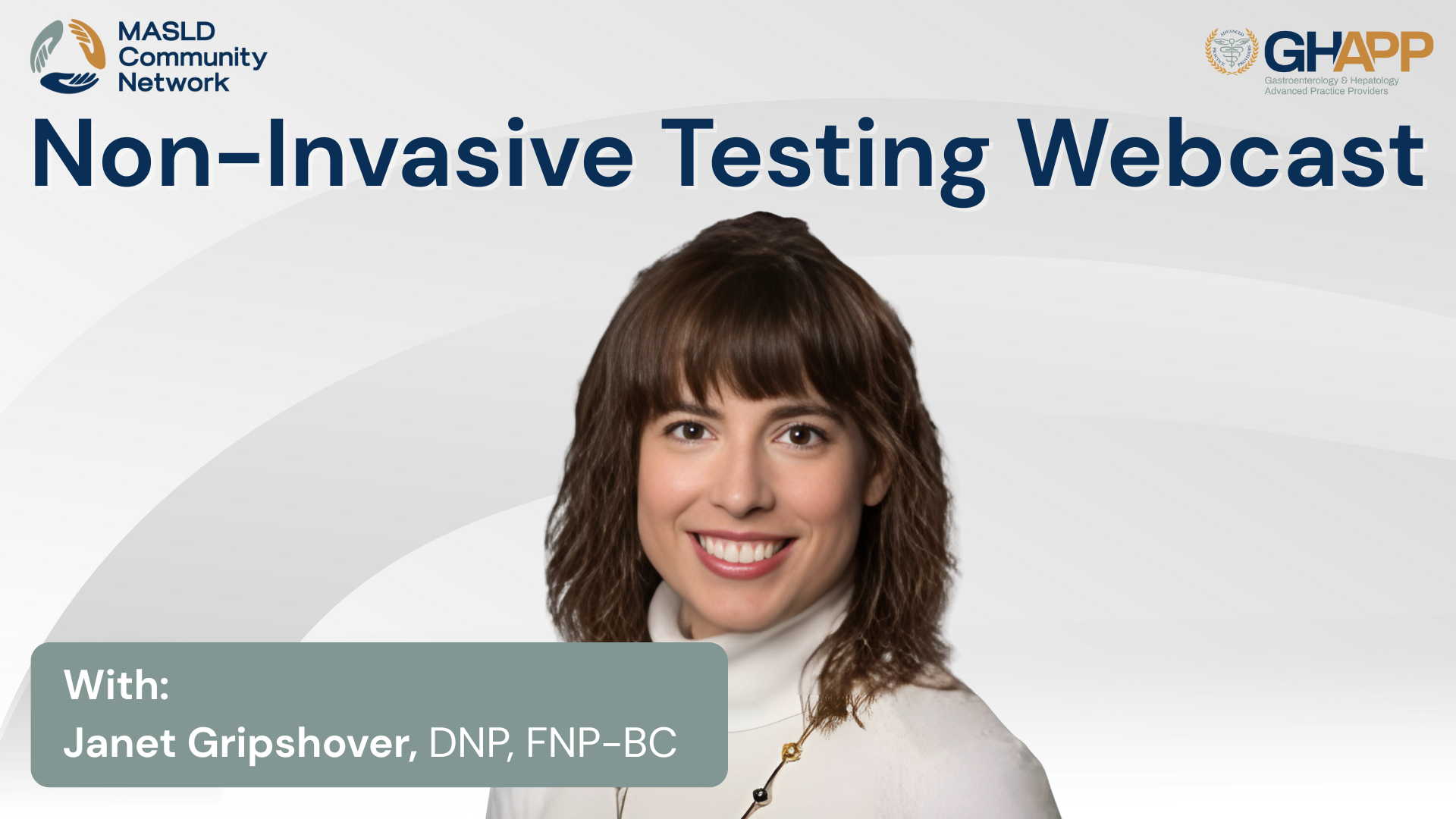
Non-Invasive Testing With Janet Gripshover

In this in-depth and practical discussion, Janet Gripshover, NP from Cedars-Sinai in Los Angeles, explores the evolving role of non-invasive testing (NITs) in the diagnosis and risk stratification of MASLD (Metabolic dysfunction-associated steatotic liver disease) and MASH (Metabolic dysfunction-associated steatohepatitis). Drawing from real-world experience and a case study involving a 65-year-old patient with multiple cardiometabolic risk factors, she breaks down the latest 2025 approaches to fibrosis assessment—highlighting the use of FIB-4, ELF score, vibration-controlled transient elastography (FibroScan®), and MR elastography. Gryover also emphasizes how combining tests across modalities can improve accuracy and patient care while avoiding the risks of liver biopsy. Learn how liver stiffness, lab values, and clinical history all intersect to guide care and treatment decisions in patients with fatty liver disease. This session is part of the MASLD/MASH Community Network and is ideal for providers, specialists, and anyone interested in the forefront of liver disease management.
Watch Now

Podcast: Role of Exercise in Liver Health

In this engaging episode of the GHAPP MASLD/MASH Community Network podcast, Jonathan Yeh, PA at Columbia University Medical Center, discusses the essential role of exercise in liver health—especially in managing MASLD (Metabolic Dysfunction–Associated Steatotic Liver Disease) and MASH (Metabolic Dysfunction–Associated Steatohepatitis). With over 14 years of hepatology experience, Jonathan breaks down the most effective types of physical activity, highlighting the benefits of combining aerobic and resistance training over high-intensity interval training (HIIT) alone. He provides practical, personalized exercise recommendations tailored to patients’ physical abilities, access to resources, and comorbidities—including suggestions for those with mobility limitations or time constraints. Jonathan also offers motivational strategies to help patients overcome common barriers such as lack of time, motivation, or access to fitness facilities. From parking farther from a destination to lunchtime walks and home-based workouts using resistance bands, he emphasizes creative and realistic ways to build physical activity into daily routines. Beyond weight loss, he explains how exercise directly improves liver function by reducing liver fat, enhancing insulin sensitivity, and preventing fat and sugar buildup in the liver. This episode is a must-watch for clinicians and patients alike seeking to understand and implement exercise as a cornerstone in the management of fatty liver disease.
Watch Now
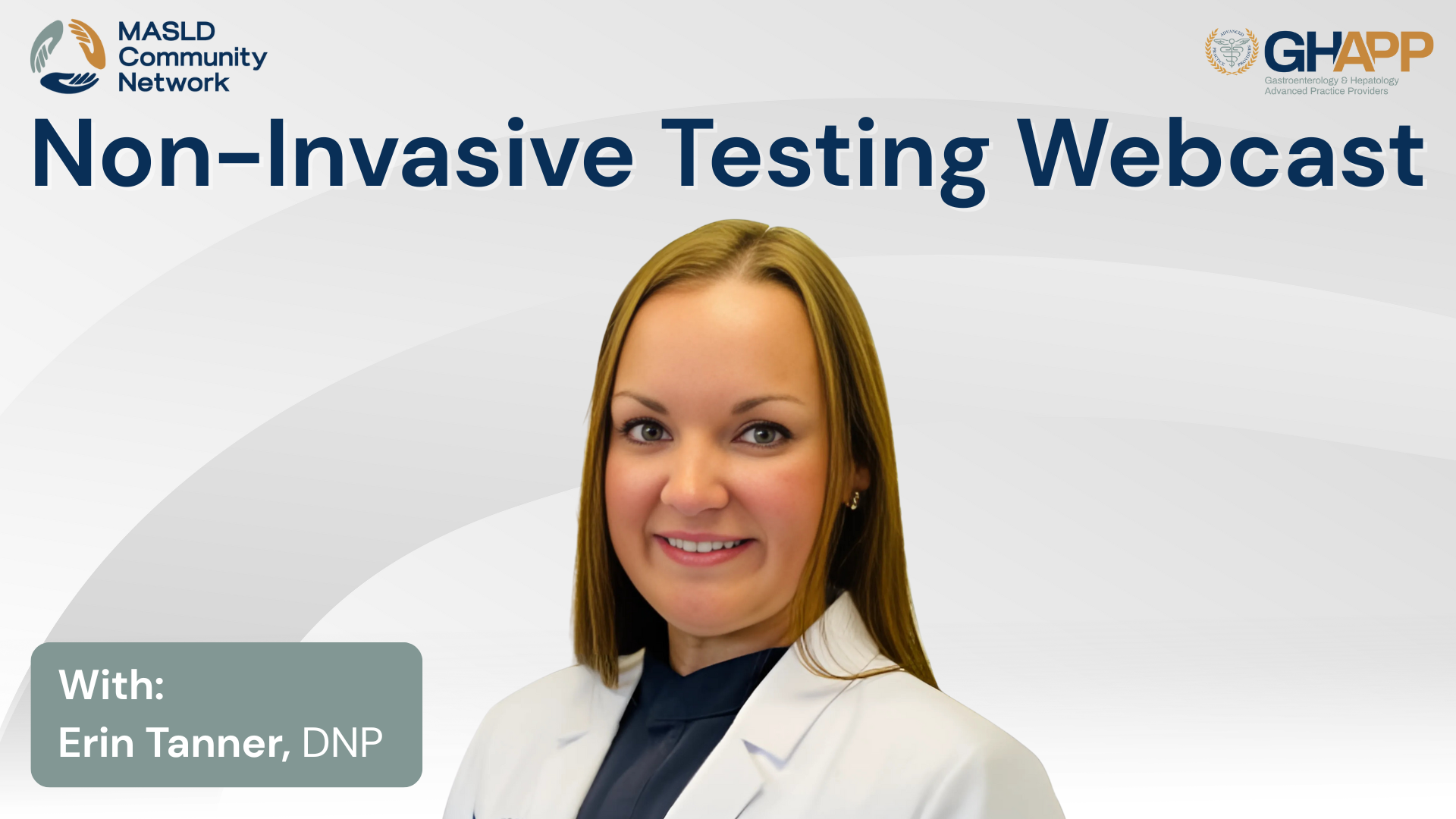
Non-Invasive Testing With Erin Tanner

In this educational session from the GHAPP MASLD & MASH Community Network, Erin Tanner, PA-C from Gastro Health in Birmingham, Alabama, presents a practical overview of non-invasive testing (NIT) options for evaluating and managing MASLD (Metabolic dysfunction-associated steatotic liver disease) and MASH (Metabolic dysfunction-associated steatohepatitis). Using a patient case study, Erin explores how clinicians can effectively utilize tools like FIB-4, FibroScan® (VCTE and CAP), ELF, MRE, and other emerging imaging and serum biomarkers to assess hepatic steatosis and fibrosis without the need for liver biopsy. The talk breaks down the pros, cons, and clinical accuracy of various NITs—including shear wave elastography, MRI-PDFF, and proprietary serum markers—and offers guidance on how to apply these tools in real-world hepatology and primary care settings. Special attention is given to identifying patients with metabolic risk factors, interpreting indeterminate FIB-4 scores, and knowing when to refer patients for further hepatology evaluation. Whether you’re new to liver disease management or looking to update your MASLD/MASH care pathways, this session offers clarity on how to stratify fibrosis risk and make informed clinical decisions using non-invasive diagnostics.
Watch Now





 September 2025
September 2025 